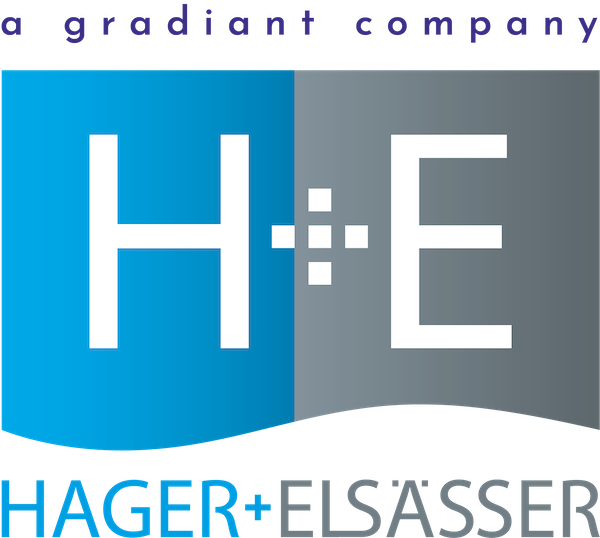Introduction
Zero-liquid discharge (ZLD) is a robust wastewater management solution that utilises a sequence of advanced treatment processes. It minimises wastewater volumes, increases water recycling, and therefore concentrates waste solids to the greatest extent possible. An efficient ZLD system utilises many different treatment processes and combinations of technologies. A common step in most ZLD systems is a large thermal evaporation stage that is extremely energy-intensive. Hence, this results in high and often prohibitive operating costs. This challenge is driving the need for innovative ZLD solutions that offer effective and reliable treatment. They must also overcome cost barriers to implementation, energy use, and operation.
Environmental regulations & water scarcity driving ZLD use
Global regions with high water stress, and countries experiencing high growth and industrialisation present mounting risks to world water quality. Many industries use large volumes of process water and generate highly contaminated waste streams. They are increasingly required to adopt measures that reduce water consumption and thereby mitigate the impact on receiving waters. These trends are evident in China, India, the USA and elsewhere, and are driving the introduction of stricter environmental regulations that require the use of ZLD.
ZLD enables a “closed-loop” solution that virtually eliminates discharge and facilitates the maximum reuse of water in process operations. This means that ZLD is receiving ever greater recognition as a “best available” solution for managing the most difficult-to-treat industrial wastewaters.
In China, ZLD systems are now mandatory in new and existing coal-fired power plants and coal-to-chemical refining facilities for treating complex industrial waste streams. This requirement is a result of China’s 12th Five-Year Plan, which includes objectives to enhance environmental protection.
India is looking to mitigate surface water pollution and enhance industrial water efficiency in drought-prone, water-stressed regions. Therefore ZLD is now mandatory across many industrial sectors including thermal power, steel, pulp & paper, pharmaceutical, chemical, textile, and food and beverage.
The USA recently adopted ZLD requirements for the steam electric power generating category. Last year, the U.S. Environmental Protection Agency finalized new Effluent Limit Guidelines (ELGs) that require ZLD for all pollutants associated with:
- fly ash transport water,
- bottom ash transport water and
- flue gas mercury control wastewater in power plants that are 50 megawatts or higher.
Governments are continuing to place more emphasis on the need to:
- protect water resources
- address rising concerns related to water scarcity
- target heavy metals and other toxic contaminants in wastewater discharges
Therefore, the use of ZLD systems is anticipated to increase.
ZLD cost barrier
ZLD systems typically integrate pre-treatment and pre-concentration steps. These can include:
- reverse osmosis (RO)
- biological treatment
- ion exchange, ultrafiltration
- other advanced treatment processes
These are followed by thermal evaporation and crystallization stages which concentrate and thereby minimize waste volumes. But thermal evaporative technologies have a high energy demand. Consequently, operating costs for ZLD systems can be very high and most often represent the single largest expenditure to using ZLD. For this reason, reliable and cost-effective solutions are increasingly needed to overcome this cost barrier and make long-term ZLD operation more affordable and sustainable .
Thermal evaporative processes can account for more than 90% of the total operating cost for a ZLD plant! Therefore, innovations that aim to improve the operational cost-efficiency of ZLD systems must target the evaporator stage.
ZLD cost solution
H+E, an Aquarion Group company, has addressed this cost challenge by developing an innovative ZLD hybrid system. This optimises the energy efficiency of ZLD operation by minimising the thermal requirements of the evaporation stage. The ZLD.eco2 system employs a series of innovative filtration and separation technologies. Importantly, reducing the residual waste volume to a minimum significantly decreases the subsequent evaporation requirement.
ZLD.eco2 includes pre-treatment, ultrafiltration, low-pressure RO stages, and a new high-pressure RO stage utilising Circular Disc (CD) Module technology from Membran-Filtrations-Technik (another Aquarion Group company). This concentrates non-organic waste material far more than is normally achievable. Minimising waste volumes results in the size of the evaporator also being minimised. This therefore reduces capital investment. In addition, since the volume needing evaporation is much reduced, the energy requirement is also far less, resulting in much reduced operating costs. This makes ZLD.eco2 a robust solution for managing heavy-loaded, contaminated wastewater from industrial processes.
When compared to conventional systems without pre-concentration of the wastewater, ZLD.eco2 uses approximately 20 per cent less energy. The amount of cooling energy needed for the condensation process is also reduced since the evaporation system is smaller. In total, this can result in as much as 80% saving in energy requirement! Even more savings result from the use of heat exchangers that recover thermal energy which is subsequently re-used. This again boosts overall energy efficiency.
About Aquarion Group
A total, enhanced EPC solution provider, the Aquarion Group offers advanced water treatment technologies and systems for the global process industries. We thereby provide solutions to today’s critical water and wastewater needs. The group specialises in
- addressing the most challenging water quality issues
- designing advanced and sustainable water treatment solutions
All of this is provided by its group companies in many different regions throughout the world.
H+E also has a successful track record of providing systems for many industrial sectors over many years. This includes:
- Power generation
- Oil & gas
- Pulp & paper
- Chemicals
- Semiconductor and electronics
- Pharmaceuticals
- Food & beverage
- Aerospace & transport
- Mining where wastewater solutions include acid mine drainage treatment, precious metals recovery, tailings volume reductions, and removing hazardous and toxic elements such as arsenic and cyanide.
A key advantage of Aquarion Group’s solution platform includes its capacity to design, build and operate customized, field-deployable and packaged treatment units. We engineer for durability and treating the most problematic waste streams in extreme climates across the globe.
